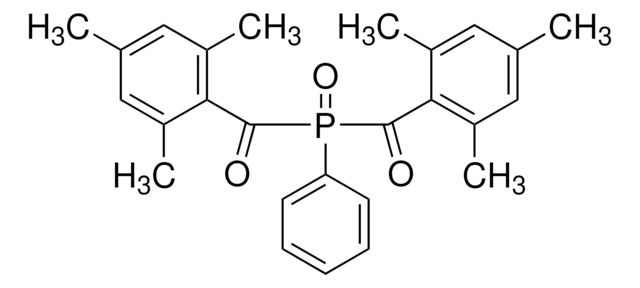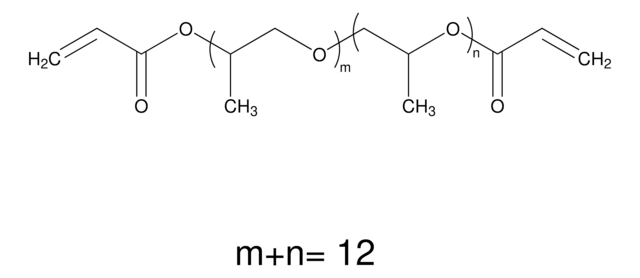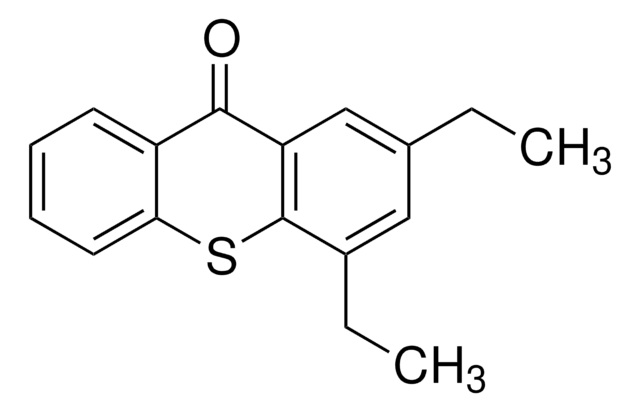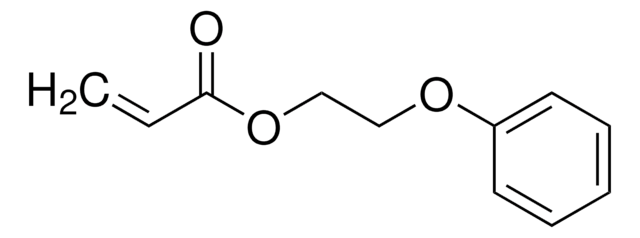246832
Tri(propylene glycol) diacrylate, mixture of isomers
contains MEHQ and HQ as inhibitors, technical grade
Sinónimos:
TRPGDA
About This Item
Productos recomendados
grado
technical grade
densidad de vapor
>1 (vs air)
presión de vapor
<0.01 mmHg ( 20 °C)
Formulario
liquid
contiene
150-220 ppm monomethyl ether hydroquinone and hydroquinone (total inhibitor)
índice de refracción
n20/D 1.45 (lit.)
densidad
1.03 g/mL at 25 °C (lit.)
cadena SMILES
CC(COC(C)COC(=O)C=C)OCC(C)OC(=O)C=C
InChI
1S/C15H24O6/c1-6-14(16)20-12(4)9-18-8-11(3)19-10-13(5)21-15(17)7-2/h6-7,11-13H,1-2,8-10H2,3-5H3
Clave InChI
ZDQNWDNMNKSMHI-UHFFFAOYSA-N
Palabra de señalización
Warning
Frases de peligro
Consejos de prudencia
Clasificaciones de peligro
Aquatic Chronic 2 - Eye Irrit. 2 - Skin Irrit. 2 - Skin Sens. 1 - STOT SE 3
Órganos de actuación
Respiratory system
Código de clase de almacenamiento
10 - Combustible liquids
Clase de riesgo para el agua (WGK)
WGK 2
Punto de inflamabilidad (°F)
307.4 °F - closed cup
Punto de inflamabilidad (°C)
153 °C - closed cup
Equipo de protección personal
Eyeshields, Faceshields, Gloves, type ABEK (EN14387) respirator filter
Elija entre una de las versiones más recientes:
¿Ya tiene este producto?
Encuentre la documentación para los productos que ha comprado recientemente en la Biblioteca de documentos.
Los clientes también vieron
Nuestro equipo de científicos tiene experiencia en todas las áreas de investigación: Ciencias de la vida, Ciencia de los materiales, Síntesis química, Cromatografía, Analítica y muchas otras.
Póngase en contacto con el Servicio técnico














